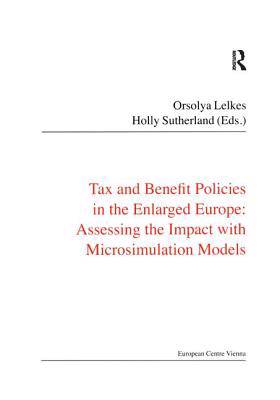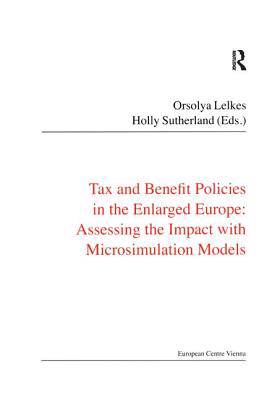
- Afhalen na 1 uur in een winkel met voorraad
- Gratis thuislevering in België vanaf € 30
- Ruim aanbod met 7 miljoen producten
- Afhalen na 1 uur in een winkel met voorraad
- Gratis thuislevering in België vanaf € 30
- Ruim aanbod met 7 miljoen producten
Zoeken
Tax and Benefit Policies in the Enlarged Europe
Assessing the Impact with Microsimulation Models
Holly Sutherland
€ 175,95
+ 351 punten
Omschrijving
This book offers the first systematic assessment of income redistribution in Eastern Europe, within a comparative European perspective, and it demonstrates the future research potential of microsimulation techniques in this region. The book's chapters are based on a unique instrument -- EUROMOD: the European tax-benefit microsimulation model, which has been enlarged to include Estonia, Hungary, Poland, Slovenia and other countries. Tax-benefit models such as EUROMOD are computer programmes based on household micro-data, which calculate each household's disposable income. Microsimulation can be used to evaluate the impact of current taxes and benefit policies on individuals' incomes and work incentives. In addition, the model is designed to answer 'what if' questions about different policy reforms, allowing the potential effects of proposed changes to be studied before their actual implementation. EUROMOD goes one step further in the process of helping policy design, in allowing international comparisons between EU countries. This book offers an important demonstration of the effectiveness of tax-benefit models in presenting complex information in a concise and comprehensible way. It discusses what the barriers to their adoption to date have been and it looks at the possibilities EUROMOD offers to future policy-making in Europe.
Specificaties
Betrokkenen
- Auteur(s):
- Uitgeverij:
Inhoud
- Aantal bladzijden:
- 216
- Taal:
- Engels
- Reeks:
Eigenschappen
- Productcode (EAN):
- 9781138467224
- Verschijningsdatum:
- 10/01/2018
- Uitvoering:
- Hardcover
- Formaat:
- Genaaid
- Afmetingen:
- 175 mm x 246 mm
- Gewicht:
- 559 g

Alleen bij Standaard Boekhandel
+ 351 punten op je klantenkaart van Standaard Boekhandel
Beoordelingen
We publiceren alleen reviews die voldoen aan de voorwaarden voor reviews. Bekijk onze voorwaarden voor reviews.











